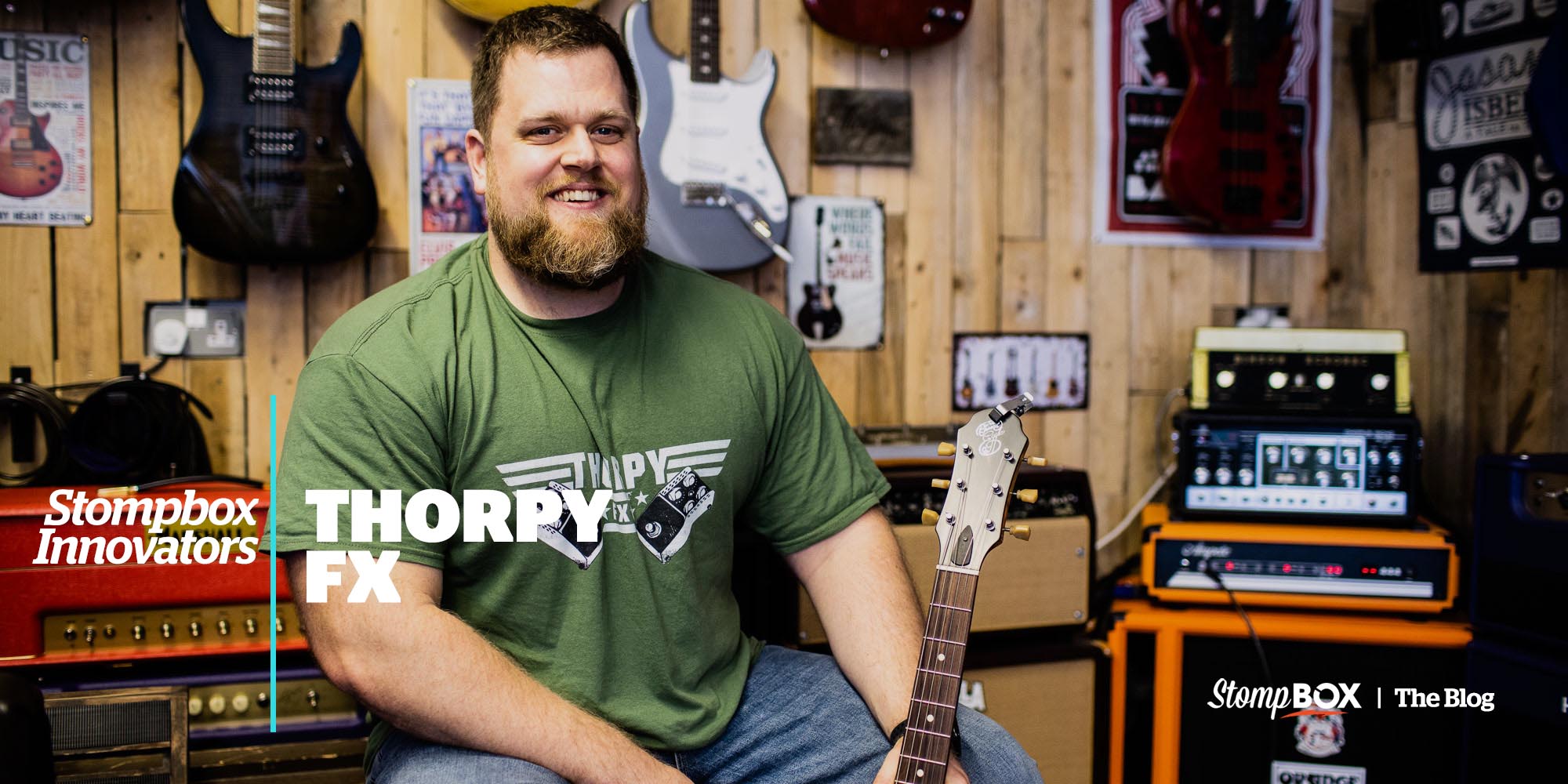Thorpy FX | Stompbox Innovators
ThorpyFX, based near the Silverstone/Oxford area in the sunny UK, is a pedal company run by former British Army officer, Major Adrian Thorpe MBE, whose first line of work was as an explosive ordnance disposal expert (in other words: he took bombs apart). That influence is reflected in his pedals, both in their names—like the Veteran, the Gunshot, the Fat General, the Peacekeeper—as well as their rugged, virtually indestructible, designs. “If you look at our pedals, you know it’s our pedal,” he says. “You can see it on a stage a mile off.”
Thorpe’s pedals are sensitive, analog devices. They have a wide dynamic range and are particularly responsive to pick attack and the instrument’s volume control. His first units were overdrives and fuzz, though he’s since diversified his line. “I’ve got a tremolo, a compressor, an EQ, a boost, a chorus, and I’m currently working on a flanger/phaser,” he says.
We spoke with Thorpe to get his opinions on classic chips, the differences between through-hole and surface mount designs, batteries, and why the trend toward mini enclosures is mostly just hype.
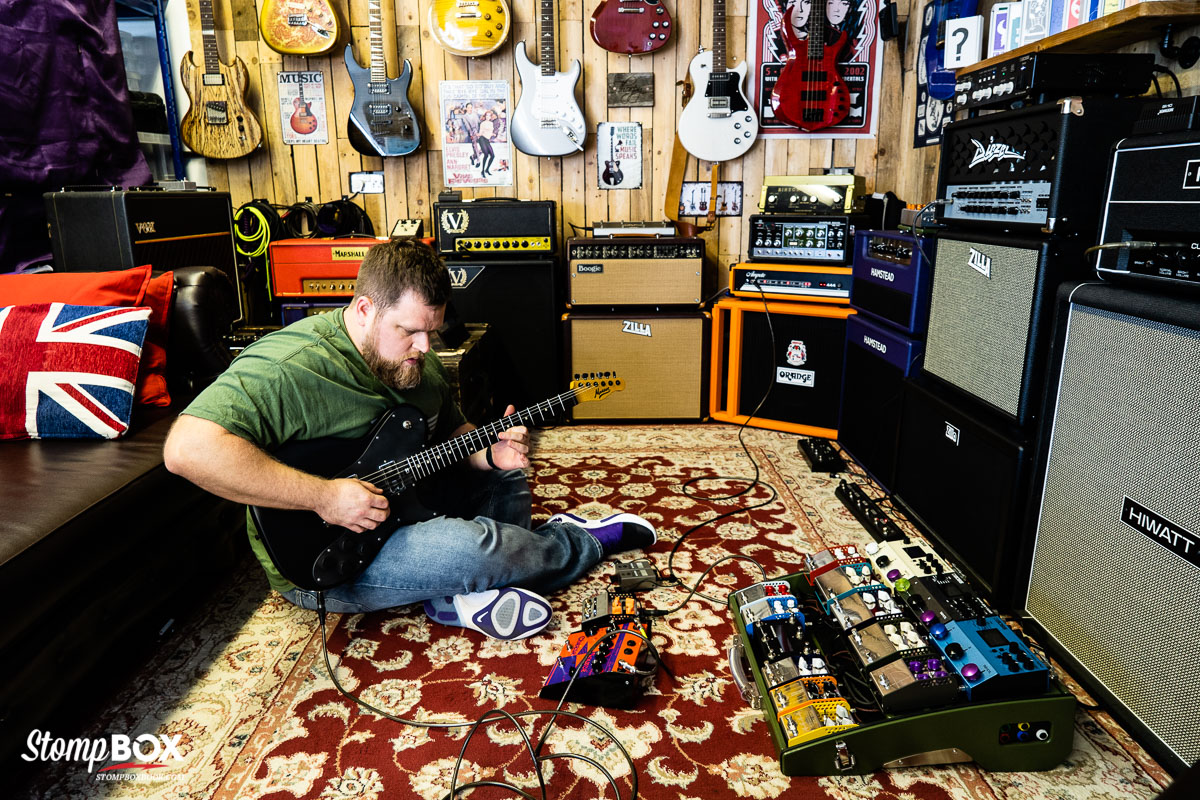
How did you get your start building pedals?
I am an ex-Army guy, former British military. I finished as a major in the army. My specialty is explosives. I am what you call an EOD expert (Explosive Ordnance Disposal). Essentially, I got into this as a bit of a hobby a long time ago to relax and it blossomed from there. I decided to go professional in 2014.
Did you leave the service at that point as well?
No, I was doing both jobs. I was in charge of soldiers during the day and in the evenings I was soldering pedals.
Are you a guitar player, too?
I am a bad guitar player, but yes, absolutely.
Does your company make clones?
No. We tend not to. But even the things that we have done—like the Veteran, which is based on two vintage circuits—we’ve adjusted both of them to suit our needs. We don’t do straight-up clones.
I am nearly 20 stone (280 pounds), if I tread on a mini pedal, that thing’s turning to dust.
Have you worked with classic circuits or do you start from scratch?
No, for instance, I always have in my mind what I want it to sound like. So for example, the Fallout Cloud, I wanted it to sound like a Big Muff—a very good vintage Big Muff—but essentially we did our own thing with that and it ended up being a different pedal. But I am familiar with all of the circuits, because I used to build clones. When I went professional, I decided to do my own thing.
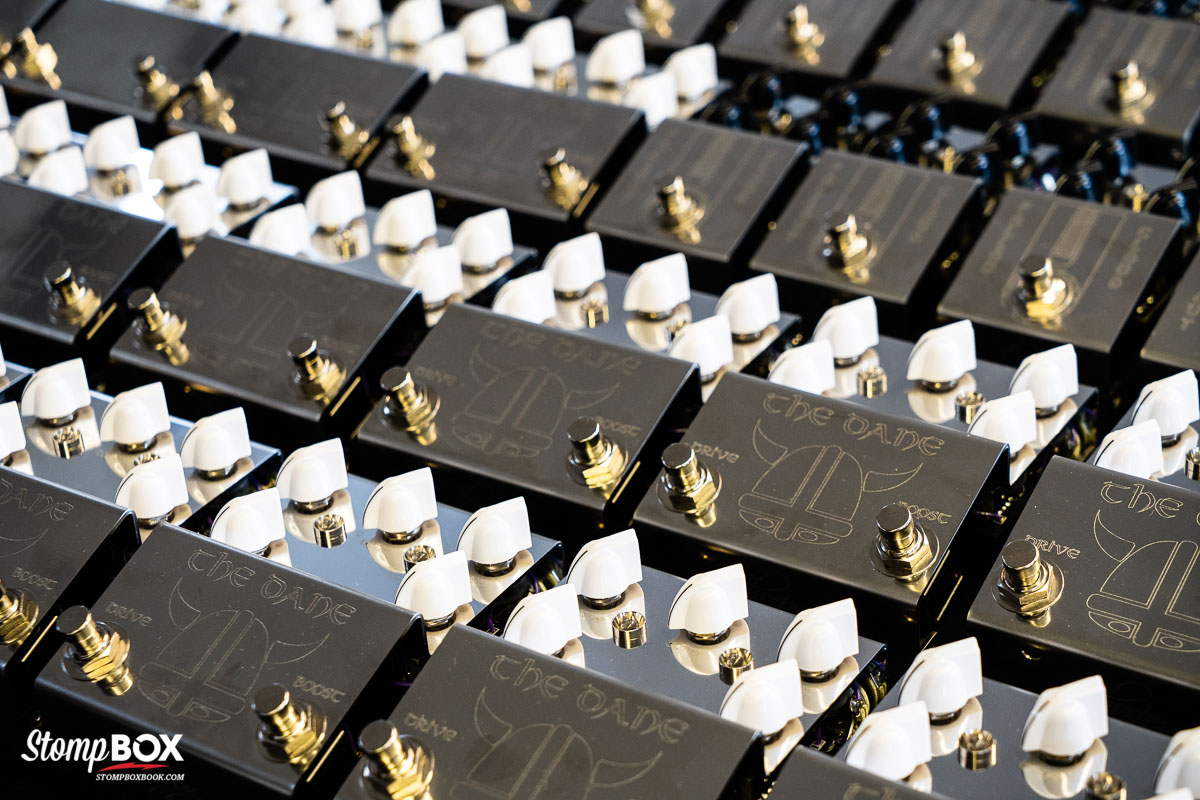
Are there any elusive, coveted chips you look out for or try to incorporate into your designs?
I design my stuff around whatever works. I don’t have in my mind that I need to use a particular chip. Because you can design your circuitry in and around whatever you want it to sound like. If you are close-minded and say, “It has to be this or it has to be that,” you may miss it. So the best thing to do is actually decide with your ears. That’s just my opinion. Other people, they adopt a different approach, but I think if you essentially build around a particular device, well, you’re missing out, because you could have done that with a different one that’s better.
Do you look for parts that are easy to service and easy to mass produce?
100 percent, because otherwise, it’s alright me making 10 of them, but guess what, what about the eleventh customer, the 100th customer, the 200th customer? Sometimes I’ll do a limited run of something, but generally, I try to make it so all my pedals are consistent, they sound the same between pedal to pedal, they have low noise, they don’t get in the way—your guitar still sounds like your guitar—those are my priorities. I don’t have a priority that it has to have this sexy chip in it or something like that. It’s not my thing.
Do you still build everything by hand?
We build everything by hand. The team has grown, but absolutely, we build by hand.

Are your pedals through-hole and hand soldered or do you use surface mount parts as well?
It is all through-hole at the moment.
Are you opposed to surface mount?
No. Not at all. I just prefer the through-hole stuff because it is easier for me to design and easier for me to build in the current manner that I am. Personally I like it, I am not against surface mount. But I would have to redesign everything, because it does sound different.
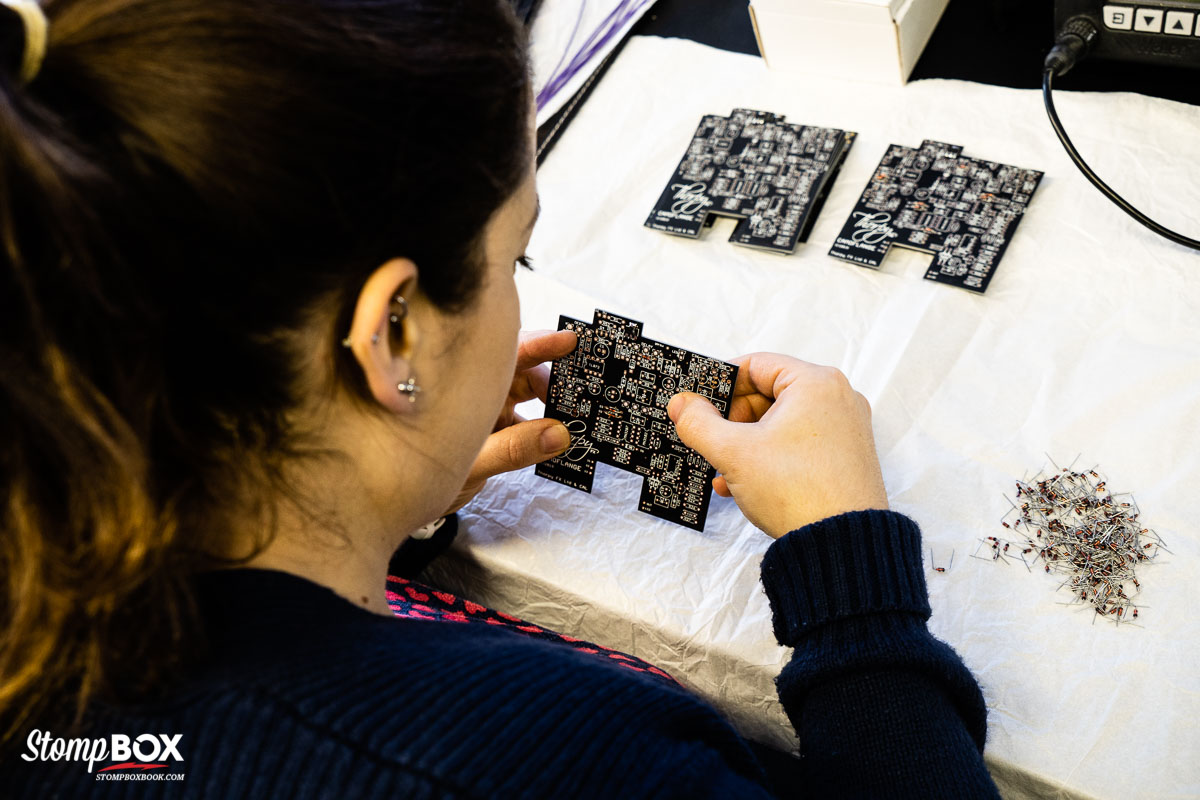
Some people say it sounds exactly the same and others say they have to completely redesign the pedal. You’re in the latter camp?
Put it this way: depending on what parts you choose, part to part, I can choose a different resistor and the tolerance will be off and then I’ll end up with two very different sounding pedals. For me, the important thing is to get the tolerance right. But typically with SMT you find that overall that the tonality of that pedal ends up being a lot brighter. You have to design that out essentially. You’ve got to change your EQ and things like that.
What are your thoughts about analog vs digital pedals?
I design and build analog pedals. But I am not against digital though, they do some really cool things. That’s like fighting the tide. However, I do think analog effects sound better if you put them up against a digital effect. But everything has its place. I am not against digital effects at all, I just prefer personally, analog.
Your pedals are also sensitive thaw the musician plays. If you play harder, you’ll hear the effect more, if I play lighter you’ll hear it less. Do you work for that?
100 percent, and to be fair, we do try to achieve that. Essentially, what I want out of my pedals is that you’ve got a broad range of dynamics so that when you’re picking harder, you dig in, it responds accordingly. That might not be for everyone, but it suits my needs.
Another trend is that pedals keep getting smaller.
We shrunk our pedals, but only because they were big enough to put people off. Some of them were, so we shrunk our pedals. But to be honest with you, this trend for mini pedals, yuck, I am not about it. I get why people want it, but you know, I am nearly 20 stone (280 pounds), if I tread on a mini pedal, that thing’s turning to dust. Also, I’ve got size 11 feet, it’s just going to fuck it up. I am not about it. I would rather have a pedal that’s the right size and in the heat of the moment, you can actually find it on a stage. Rather than go for 6000 that all look the same, all tiny, and will fall over as soon as you look at them. But customers want what they want and some love it and some don’t. I’ve measured the jack-to-jack width on a mini pedal and it’s the same width as my pedals, but mine have got top mounted jacks. They take up the same amount of real estate on a pedalboard as mine do side-by-side.
So you’re saying it’s psychological?
100 percent, and that’s what’s mental. “I have to get more on the board.” Cool. But your feet are still the same size and you actually can’t get more on the board, you’re just kidding yourself. But that’s like fighting the tide as well. You’re never going to win that argument.
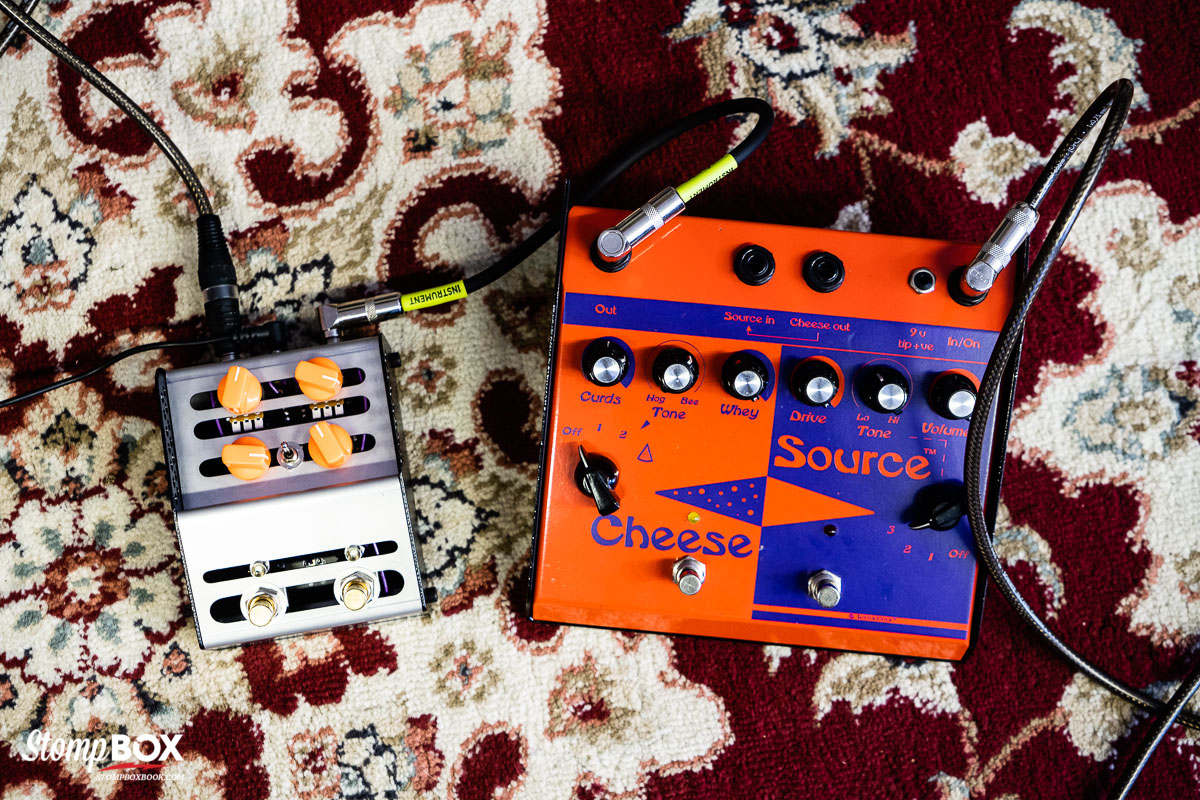
How about batteries, do you put them in your effects?
We used to. We don’t any more. It’s a waste. It’s pointless. Most people who buy our pedals now usually use pedalboards and use a power supply on the pedalboard. It’s much better for the environment. It’s much better for the pedal, because it’s consistent, and I’d rather not have that waste associated with my products, really.
Your pedals have a specific look. Do you look at the artwork and design as ornamental or is it part of the function of the pedal?
The design is done for engineering reasons and also branding reasons. If you look at our pedals, you know it’s our pedal. You can see it on a stage a mile off and go, “What’s that?” If they don’t know what it is they’ll typically ask, because it draws the eye. If they do know what it is, then they’ll know it’s a Thorpy pedal. Regardless of that, the artwork that we put on it is fairly minimalist, but it’s specific to the name of the pedal. I have a military background, so all of mine have a military theme, it’s just one what I can stand out from the crowd, really. That’s being very honest. I do all the artwork. I am a pretty basic artist, but I really enjoy it.
What is the engineering reason?
With ours, you cannot tread on the knobs because they are hidden. When you put your foot on top of the pedal, the knobs are recessed into the pedal. So you can’t adjust them accidentally, you can’t kick them off. And the angle of the pedal presents the switch to your foot better.
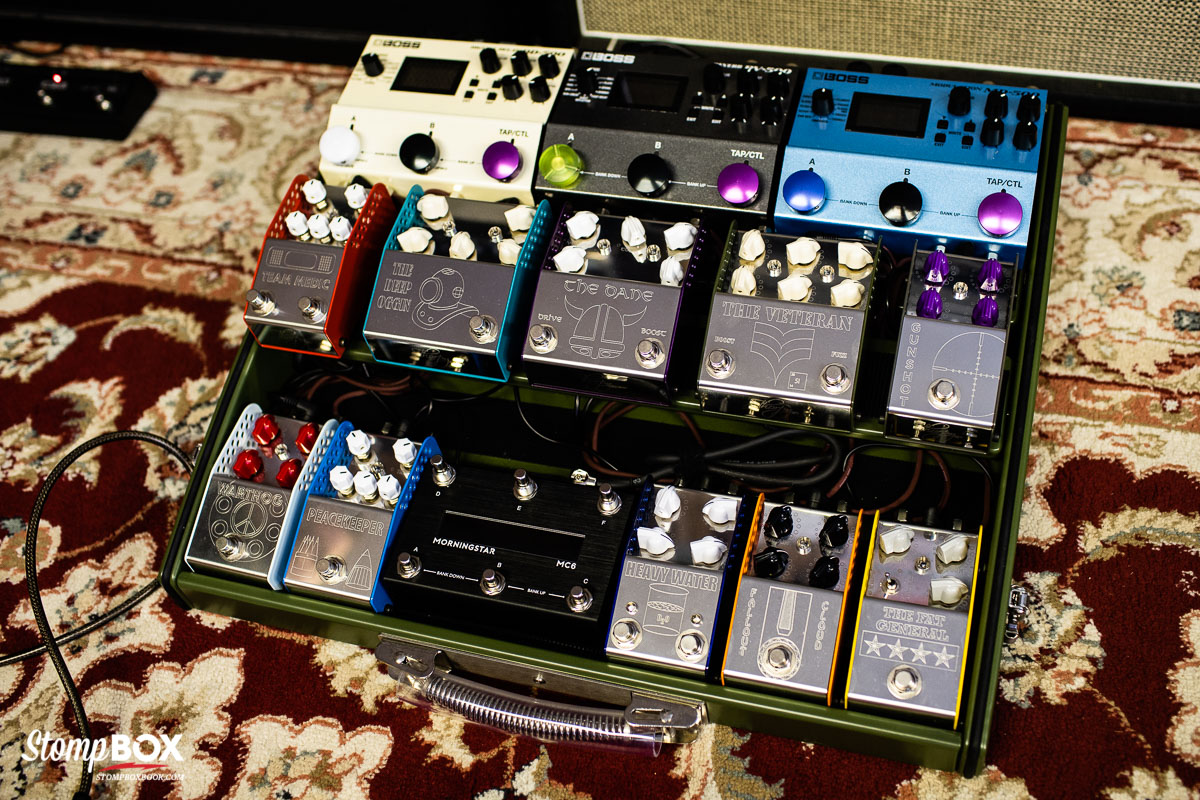
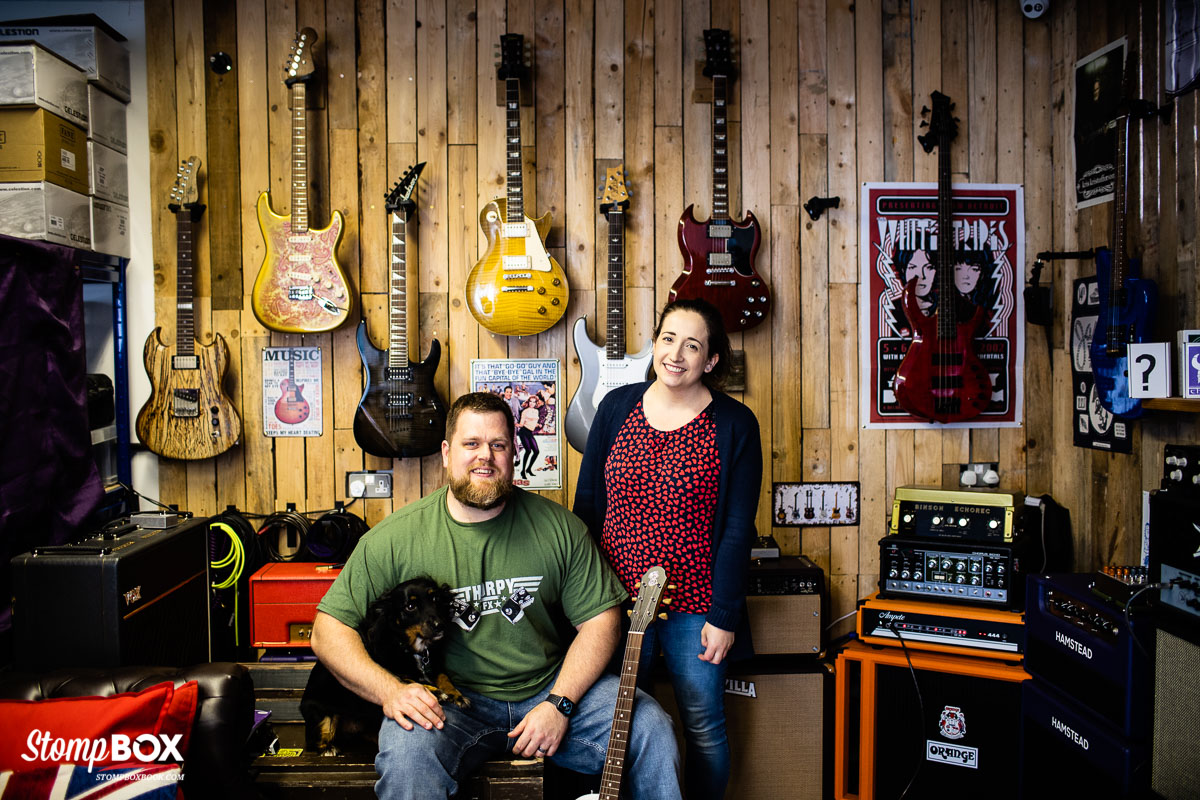
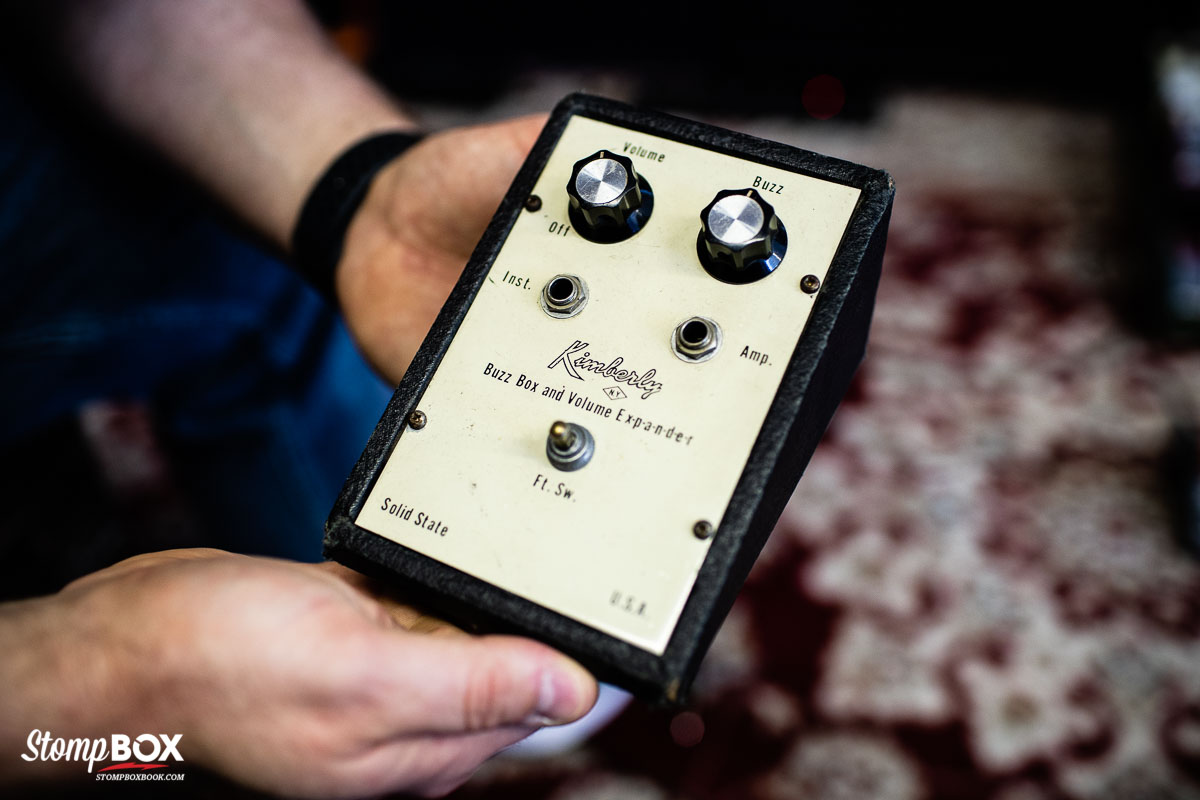
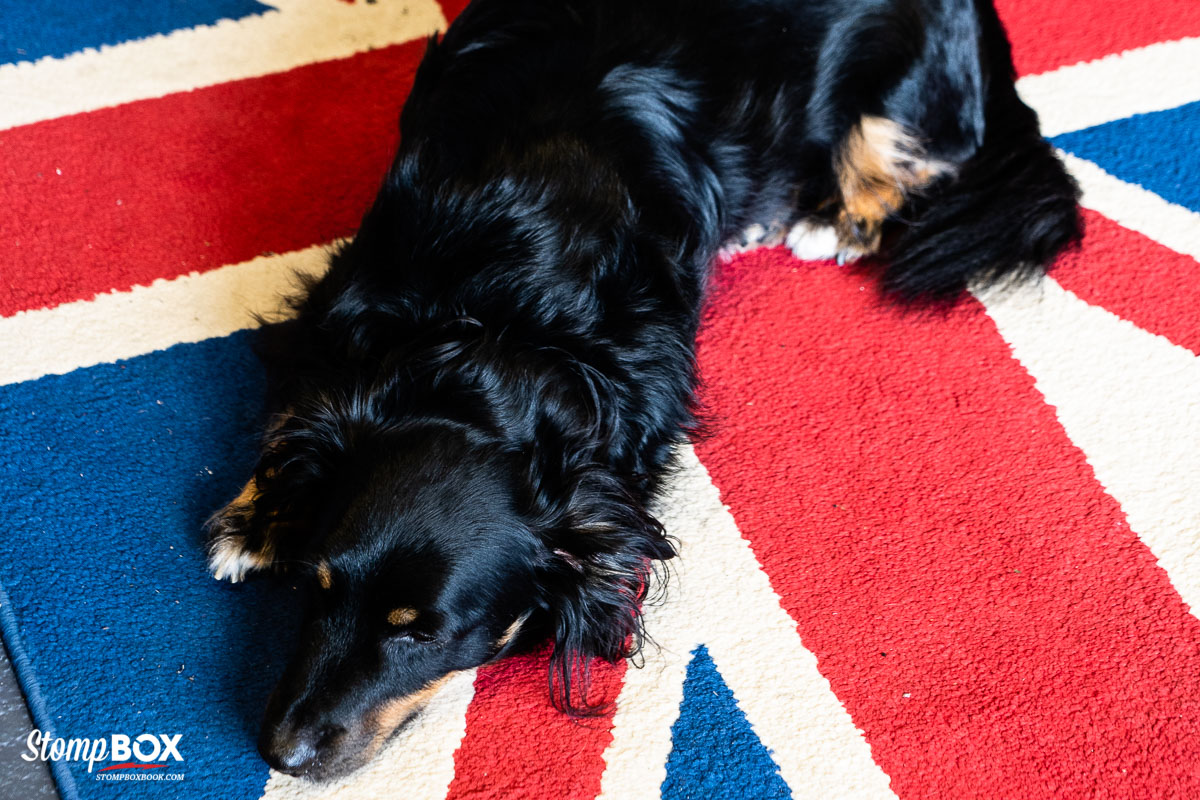
More exclusive content from our interview with Adrian Thorpe will be featured in the Stompbox Book, coming Fall 2020.
Get on our newsletter for book updates.
